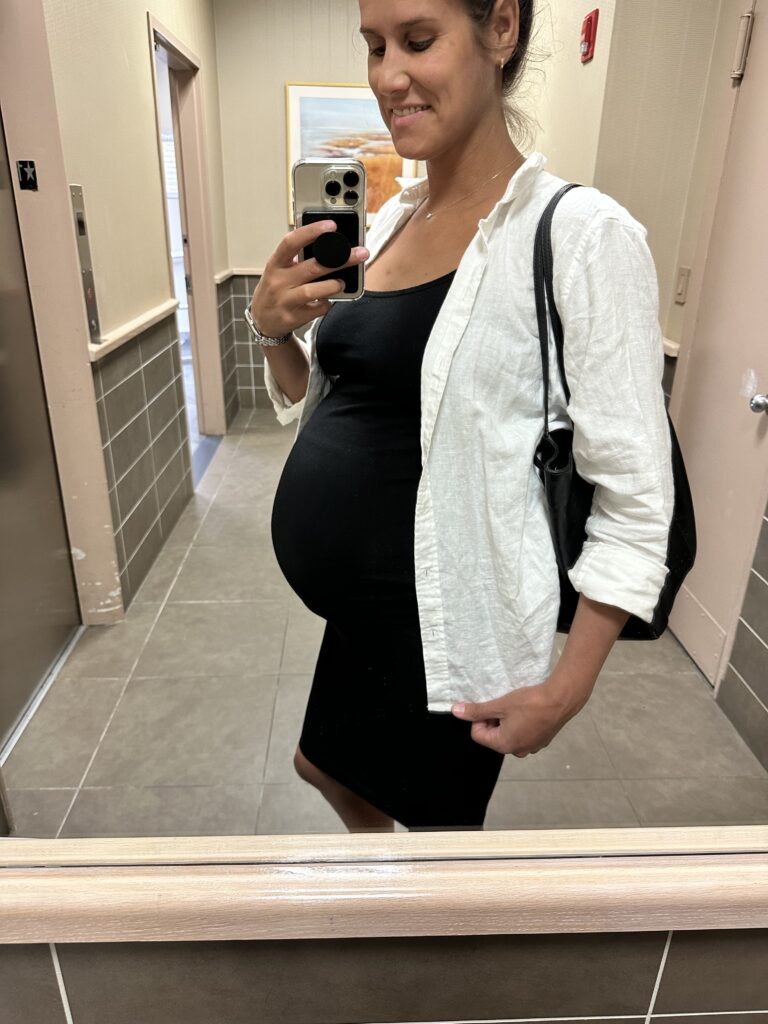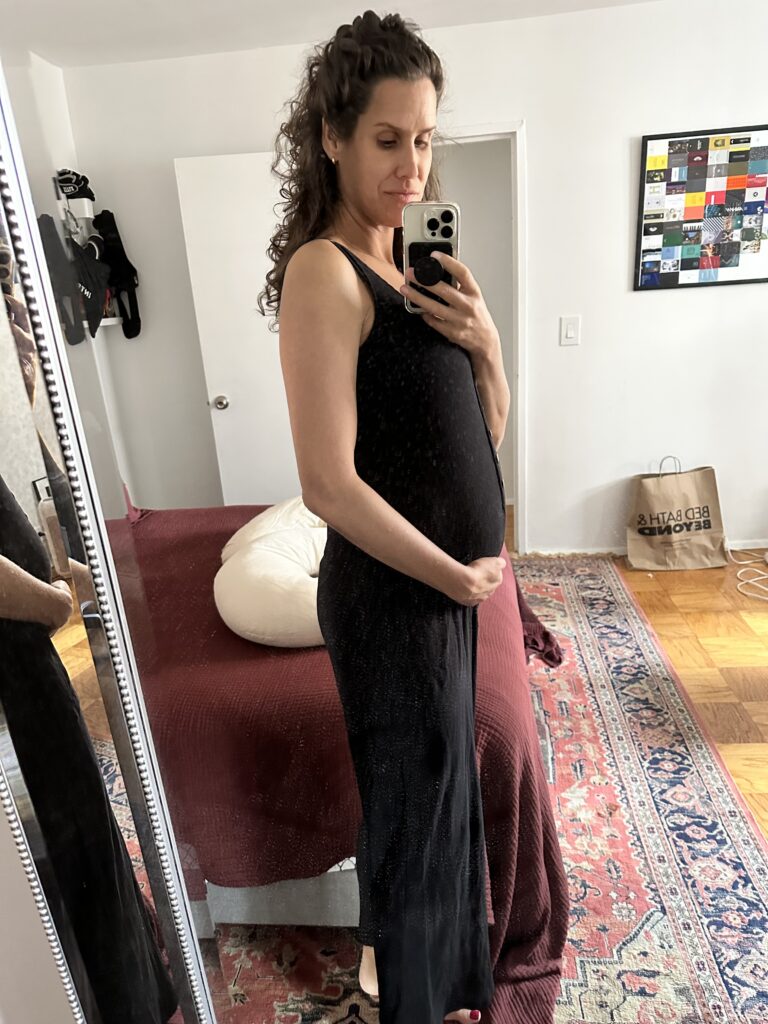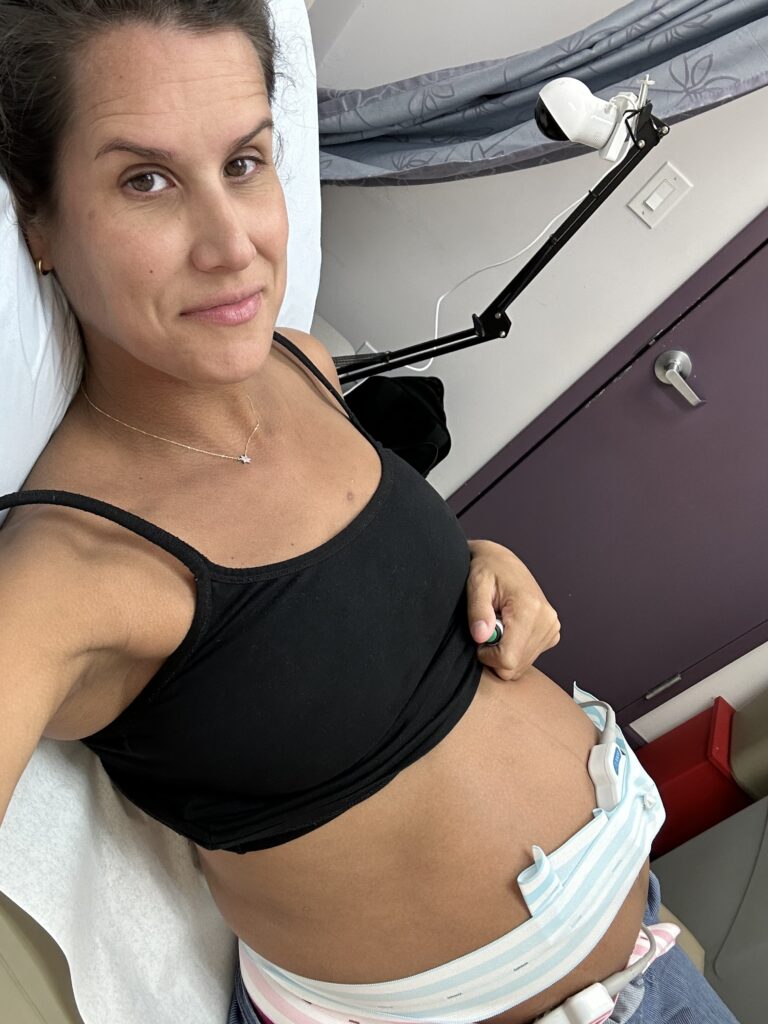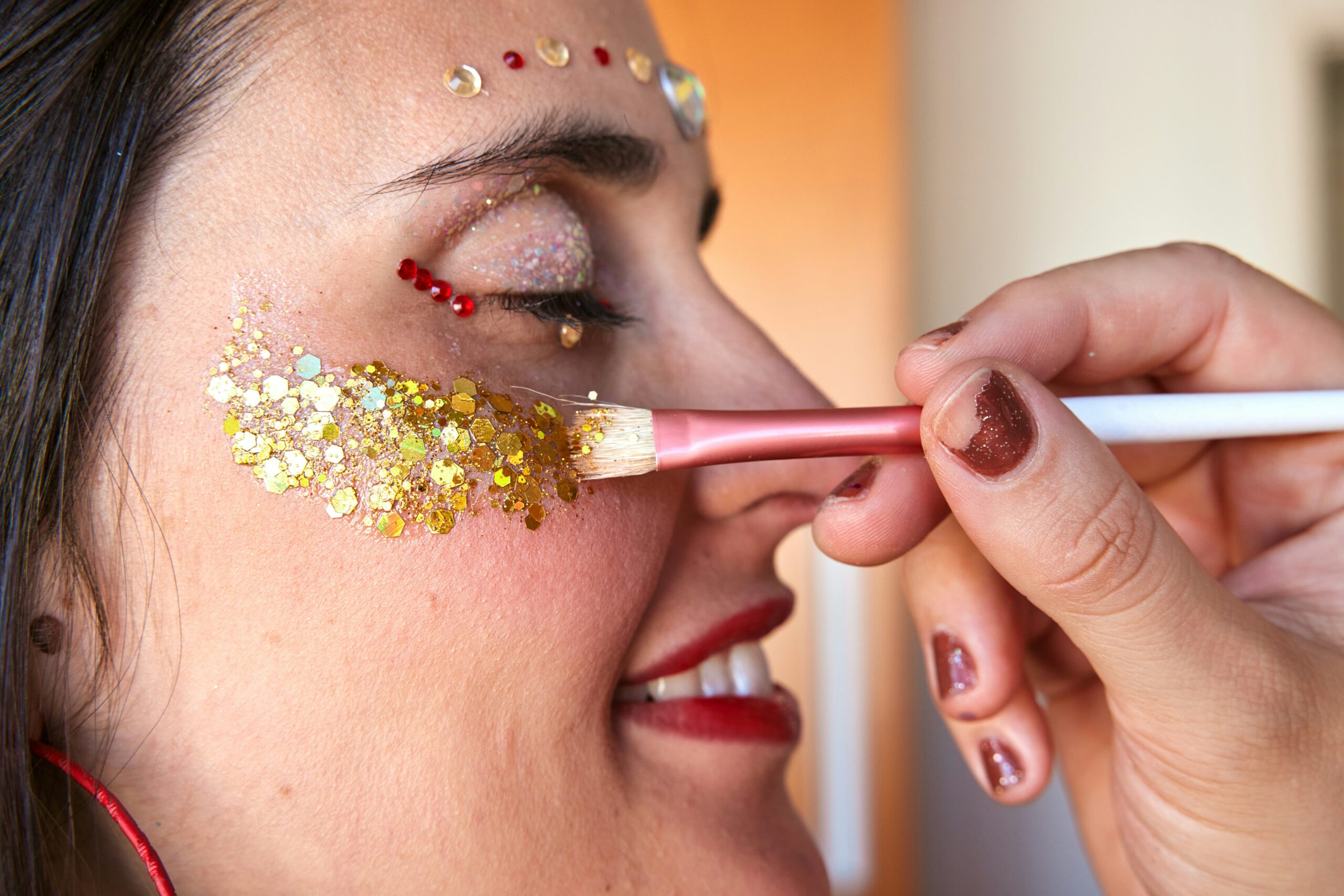I hope you’re reading this after searching “Should I have an amniocentesis?” because if you’re wondering…the answer might actually be yes.
I know that because I did opt in to the amniocentesis test even though I didn’t have to. I did it even after clear Non-Invasive Prenatal Testing (NIPT), a clear nuchal translucency (NT) test and a clear anatomy scan. I wasn’t crazy to do it—and if you’re thinking about doing it, here’s the first thing I want you to know: neither are you.
At the age of 37, after several rounds of IVF fertility treatments, I was absolutely thrilled to finally be pregnant with a very, very wanted baby. My fertility clinic monitored my pregnancy closely: we had weekly ultrasounds from about five weeks, and, at 10 weeks, we found out my pregnancy was complicated by a relatively rare condition called intrahepatic cholestasis of pregnancy (ICP), a liver disorder that affects some pregnant women.
ICP risks only one negative outcome—but that outcome is stillbirth, the loss of a baby after 20 weeks. I had known ICP was likely due to an underlying medical condition, but it didn’t make it any easier. Pregnancy is stressful and anxiety-inducing for most women, but facing the daily psychological drumbeat of “I wonder if my baby will be born alive?” every fourth or fifth thought for nine months was incredibly challenging.
All of that to say, I wanted my baby, against all odds. But I had been forced to accept the knowledge that wanting a baby—or even being pregnant—didn’t ultimately mean you were guaranteed to hold one in your arms at the end of it all.
I spent much of my pregnancy scared and anxious in a way that couldn’t really be calmed, because the risk and uncertainty was there and all too real. You don’t forget being told you have a heightened risk of pregnancy loss.
Even so, I tried to enjoy my pregnancy and I treasured every indication things were going to be okay: first the NIPT, which analyzes fragments of fetal DNA circulating in the mother’s blood to assess the risk of chromosomal abnormalities. Then the NT, an ultrasound screening that checks for Down syndrome and other genetic issues. And lastly, not one but two anatomy scans, which are much more detailed ultrasounds that assess the baby’s development and check for any potential physical abnormalities.
At every milestone, it felt like we’d defied the odds of age, infertility and chronic illness to make something perfect. I felt a momentary relief, until we got to the end of our second anatomy scan at 20 weeks, and my doctor asked if I wanted an amniocentesis: a prenatal diagnostic test that involves taking a small sample of amniotic fluid via a thin needle that’s inserted into the mother’s abdomen and uterus to check for any genetic conditions and chromosomal abnormalities in the developing fetus.

At every milestone, it felt like we’d defied the odds of age, infertility and chronic illness to make something perfect. I felt a momentary relief, until we got to the end of our second anatomy scan at 20 weeks, and my doctor asked if I wanted an amniocentesis: a prenatal diagnostic test that involves taking a small sample of amniotic fluid via a thin needle that’s inserted into the mother’s abdomen and uterus to check for any genetic conditions and chromosomal abnormalities in the developing fetus.
My first thought was, of course! My mom had an amnio with me and my brother (she was having kids in her late 30s way before it was trendy) so why wouldn’t I have one with my baby?
But as I reached out to friend after friend to ask about their experience with amnio, I was genuinely shocked I couldn’t find a single person I knew who’d one. One said she’d considered it—but decided against it. One said she’d done a Chorionic Villus Sampling (CVS) with her second, but not with her first. (A CVS is similar to an amnio—but it involves inserting a catheter through the cervix and into the placenta to collect a sample of chorionic villi, which contains genetic material for the baby. CVS actually carries a slightly higher risk of miscarriage compared to amniocentesis, but it can be done earlier in the pregnancy.)
A dozen more friends and family members said: “No, of course not, the NIPT was fine, so why would I risk a miscarriage?!”
I quickly learned this is the monster under the bed of amniocentesis. The ‘1% chance of miscarriage’ comes up in every Google search, every book and at every doctor’s office. Sounds kind of tiny, right? 1% is actually 1 in 100. Sounds kind of big, right?
It’s all in how you look at the problem, and so, I started to look.
Here’s the second thing I want you to know: It’s okay to take steps to try to ensure you have the life you want.
I knew I would regret not doing this test if something turned out to be wrong and that thing turned out to have been knowable. There is a difference between a screening test and a diagnostic test. PGT, NIPT, NT, etc are all screening tests: they tell you your odds of there being something wrong, not whether or not something is wrong. An amnio or a CVS is diagnostic: it tells you if something is wrong. Even so, it’s not a perfect test: it’s not able to tell you what every aberration means in your specific case—but it is definitive as to whether or not something is abnormal.
Becoming a mom for the first time at 37 means most people I know are already parents, and some of those are rare-disease parents—truly rare, like only a few thousand cases ever—and I’ve witnessed their challenging journeys. I have the utmost respect for how they’ve handled the hand they’ve been dealt, and how fiercely they’ve loved their children through unimaginable challenges. But I couldn’t shake the knowledge that those parents had fine NIPT results and normal NT results too. The hard reality is there are microdeletions and micro additions that happen farther along in fetal development and can have significant consequences.
I know we don’t always get a choice in our parenting journey, and I signed up to love and care for my baby no matter what happens to him in his life. Knowing and loving him now, I know I will—but at that moment in my second trimester, raising a baby with a profound disability was still something I wanted to avoid if at all possible.
At 37, I was both old enough to be at risk and to have seen what happens when you’re on the wrong side of that risk, yet still young enough to try again and have a very decent shot at having the healthy baby I hoped for.
Let’s not tiptoe around it: there are two elephants in the room of this decision. One is miscarriage, and the other is abortion—or as it’s called in this context, ‘termination for medical reasons’—often of a pregnancy that is incompatible with life.
The legal right you need for this decision to be a decision is the right to an abortion. I have never had an abortion, but I’ve lived my life in the blue states of the Northeast, knowing that I could, and that, in certain circumstances, I would. That belief did not change with pregnancy.
The only other women’s stories I found online about amniocentesis concluded that no matter what, they had to meet their baby–and I found I didn’t, especially not knowing that meeting this baby (if he was unable to survive) would rob me of at least six precious fertile months in which I could try again. I wondered if becoming a mother would change how I felt about abortion, and I can say now, definitively, yes–it made me even more certain abortion is among our most sacred rights.
To be a good parent takes all you have and all you are—and it is not something that anyone who isn’t willing to commit to it should ever be forced to do. I risked my physical and mental health to bring my baby into the world because it was something I wanted badly enough. No one has the moral high ground to ask anyone else to do that if they don’t want to do it.
But if you’re weighing an amnio during pregnancy, no matter what you believe, the facts of abortion access will shape your decision. Your baby needs to be tested during this window, typically between 15 and 20 weeks, ready or not, because it takes two weeks to get the test results back, not to mention decide what to do about them. In New York State, the latest you can get an elective abortion is 24 weeks.
Even as a progressive, feminist woman living in a blue state, the timeline still felt vanishingly short to make such a momentous decision if our test results showed a problem. There would be nothing trivial about choosing to terminate this pregnancy if something was wrong, and nothing easy about the decision process.
I felt like a bad person for even engaging with the question: shouldn’t I already see this being inside me as my baby? Shouldn’t I already love it like it was my baby? Was it just because I’d had too much exposure to the mechanics of creating babies, spent too many hours counting the stages from ‘gamete’ to ‘sac’ to ‘fetus’, and not enough time imagining the person who might be growing inside of my belly?
If I was bad, I wasn’t alone.

It’s estimated 60 to 90% of Down Syndrome pregnancies end in abortion, and that’s just the diagnosis most people are most familiar with. I know happy, healthy people who are living with Down Syndrome. I know their families were not ruined, and many lives were enriched by that person’s existence. I’m sure you do too. And yet, most people, whatever they say in public, don’t choose that life in private.
The numbers vary across other diagnoses—only 17 percent for trisomy 18 or Edwards syndrome (that artificially low number doesn’t tell you that around half die in utero and 90 percent of those born die in the first year of life.) Similar numbers abound for every rare genetic disease you can Google—and trust me, I went through all of them.
I swallowed whole statistics, studies, whitepapers, building a mountain of data to fortify myself. I refused to feel guilty for actively considering an eventuality that every relevant piece of data I could find said was what the majority of people decide to do. I so, so desperately wanted my baby to be okay—but just as desperately didn’t want to spend one of the few fertile years I had left birthing a baby who couldn’t live, or raising a medically-complex child as an older parent, not knowing how they’d be cared for after I was gone. All I knew was that I wanted so badly for my baby to be healthy, and that led me right back to the other elephant in the amnio room: What if my baby was healthy, and the amnio was the thing that killed him?
Here’s the third thing I want you to know: the statistics about amnio and miscarriage are misleading.
The numbers you read indicating the odds of miscarriage include data that goes back to the 80s when imaging was much worse (ask your mom if she had one: mine is amazed by how much we can see on ultrasound now). And they’re national numbers, which means they include the results of an incredibly wide range of medical practices, of hundreds of thousands of medical professionals with varying levels of skill, experience, and expertise.
I knew I would be gutted if my decision caused something to go wrong, but I was having a high-risk, advanced-maternal-age pregnancy. My odds of miscarriage at any given moment were equal to or higher than my risk of miscarriage from an amnio, and the more I read, the more I realized my actual odds at my high-volume, high-risk maternal fetal medicine practice in the heart of Manhattan with an experienced practitioner weren’t really 1%, they were more like 0.1 percent.
The genetic counselor I spoke with before the procedure told me that the best way to make the decision was to consider whether having a good result would lower my overall anxiety about the pregnancy. A dear friend who’s an economics professor asked me whether my potential sadness at losing the baby was greater or lesser than the 0.1 percent chance of miscarriage, forcing me into the dual horror of contemplating the accidental loss of my baby and trying to do math in my head. My husband said it was my decision, and whatever I decided would be right—advice I held onto for dear life.
So, at the end of the day, I opted in.

The week of the procedure, my husband was gone performing his military reserve service, so I went to the office alone. I told them on the phone that there was a non-zero chance that I would walk out that day not having had an amnio—and they said it was fine, that I could change my mind up until the very last second.
It felt surreal to make pleasant small-talk with the nurses, to catch up with the doctor, who I’d met a few weeks earlier during a midnight panic run to L&D. I asked her to confirm how many times she’d done this procedure and she stopped to think for a minute and then asked, “This week?” Something about the way she answered calmed the buzzing in my head.
I thought about all the moms I’d pictured being over the last few weeks as I debated with myself: disoriented by loss or by terrible news, miserably and bereft, or exhausted and resentful, and decided I was going to be strong for all of them, for myself and for my baby. Strong enough to make a hard decision. Strong enough to embrace my truth and my desires. Strong enough to survive whatever happened next. I told her to go ahead. She offered to turn the monitor away and I said “No, I want to be here—whatever happens.”
It was not pleasant to watch a giant needle appear on the ultrasound and plunge slowly towards my tiny baby, who thoughtfully kept his back turned and didn’t even notice anything was happening. I asked the doctor if my baby knew the needle was there, and she said she once had a baby reach out and grab the needle and shake it. So, yes, the baby knew. Even so, it was not pleasant to sit through a scary, excruciatingly long week of waiting until I was officially all clear.
After learning my husband was out of town, the kind doctor offered reassurance. She explained that while there’s officially a one-week risk period after the procedure, in her experience, any complications have always occurred on the first day, and unofficially, if I made it 24 hours I was going to be fine.
It was also not pleasant waiting two weeks for the amniocentesis results. Amnio results are definitive, but they can be complicated. Sometimes, they reveal an abnormality, but doctors can’t predict the exact outcome for your baby. They can only share information about other babies who had similar findings, and sometimes even the real-life outcomes are on a spectrum of severity.
When the genetic counselor called, I’d already opened the results, thanks to my obsessive refreshing of the clinic’s portal. They’d told me not to because, if it was a confusing result, it was better to hear it with context.
Luckily, mine was simple: normal. Normal. Everything looked normal.
Sitting alone looking at that word on my laptop screen, I felt an echo of that same morning I’d sat there alone in the bathroom, looking at those two pink lines: he’s really in there–and this is really happening.
When we got on the phone, I confessed I’d already had a day or two to process, and so she asked me how I was feeling now. She asked if the amnio had done what I hoped it would do. I’d told her honestly in our first conversation that I didn’t know if anything would lower my anxiety about the pregnancy, yet after the fact, it actually did.
Knowing the little spark inside me was healthy and growing strong became my anchor. It gave me strength through every non-stress test (NST), ultrasound and exam, all the way to the induction and finally meeting my son.
His perfect, curious little face looked up at mine, and I saw myself and everything I’d ever dreamed of in the intense need-to-understand shining in his eyes.
Together we’d crossed every bridge out of the theoretical and into a new reality that was as perfect as I’d imagined. I am not less of a mother because I took a risk to ensure that reality for us. You are not less of a mother if you are considering doing the same.
So, here’s the last thing I want you to know: I’d do it again.
Author
-

Kate Winick is a senior marketing leader and social media expert. As a writer and editor, her work has appeared in ELLE, Who What Wear, Today, Yahoo, Martha Stewart, and more. She lives in New York with her husband and baby.
View all posts




